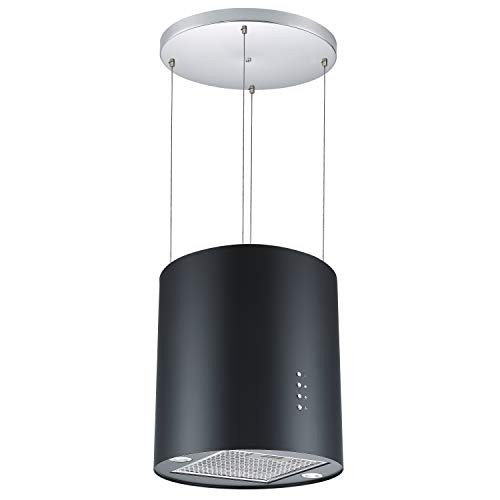cooker-hood-extractor-fan0714
cooker-hood-extractor-fan0714
5 Killer Quora Answers On Chimney Cooker Hoods
Understanding Chimney Cooker Hoods: A Comprehensive Guide
Chimney cooker hoods have ended up being a staple in modern kitchens, merging functionality with trendy looks. These ventilation systems are created to eliminate smoke, smells, and airborne grease from the kitchen, enhancing air quality while matching kitchen design. In this blog site post, we will check out numerous aspects of chimney cooker hoods, their advantages, types, installation ideas, and maintenance guidance.
What is a Chimney Cooker Hood?
A chimney cooker hood, typically called a chimney hood, is a kitchen appliance installed above the cooking range to extract smoke, grease, steam, and odors while cooking. Its style includes a vertical structure looking like a chimney, providing it its name. These hoods can be ducted (venting air outside) or recirculating (filtering and reintroducing air), catering to varying kitchen setups.
Key Features of Chimney Cooker Hoods
| Function | Description |
|---|---|
| Design | Smooth and modern, fits numerous kitchen styles |
| Sizes | Available in several widths and heights |
| Filters | Usually geared up with grease and charcoal filters for optimum efficiency |
| Controls | May consist of buttons, touch, or remote controls |
| Lighting | Features integrated lighting for much better presence while cooking |
Advantages of Using Chimney Cooker Hoods
-
Improved Air Quality: Chimney hoods successfully get rid of harmful vapors, ensuring a much healthier cooking environment.
-
Smell Elimination: They help remove cooking smells, avoiding them from settling in furniture or upholstery.
-
Grease Reduction: A chimney hood limitations grease accumulation on surface areas, making kitchen cleansing much easier.
-
Boosts Kitchen Aesthetics: Available in various designs, they can function as a centerpiece in kitchen style.
-
Increased Kitchen Comfort: By improving air blood circulation, they make cooking more enjoyable, especially in restricted kitchen spaces.
Kinds Of Chimney Cooker Hoods
Chimney hoods come in different types, each designed to suit specific needs. Here are the most typical types:
| Type | Description | Pros | Cons |
|---|---|---|---|
| Wall-Mounted | Set up against a wall above the cooking range. | Space-saving, stylish, and flexible. | Needs wall area; may be more expensive. |
| Island | Suspended from the ceiling above an island cooking range. | Uses visual appeal and efficient ventilation. | Setup can be complicated; greater expense. |
| Under-Cabinet | Mounted under kitchen cabinets. | Perfect for kitchens with minimal space. | Less aesthetic appeal; might restrict air flow. |
| Integrated | Integrated into kitchen cabinetry for a smooth look. | Surprise design, optimizes space. | Normally more costly; may limit power. |
Setup Tips for Chimney Cooker Hoods
Setting up a chimney cooker hood can be a simple procedure, but correct guidelines should be followed. Here is a list of vital installation ideas:
-
Select the Right Height: The ideal height for setup is generally in between 26-30 inches above the cooking surface area.
-
Consider the Ductwork: Ensure sufficient ducting remains in place if you choose a ducted design. Short, straight duct runs reduce loss of suction.
-
Validate Electrical Needs: Check the hood’s requirements for electrical requirements and guarantee appropriate circuitry.
-
Follow Manufacturer Instructions: Each brand name might have distinct procedures; constantly describe the producer’s guide.
-
Protect Proper Ventilation: Ensure proper ventilation outside the home for ducted hoods, preventing backdrafts.

Frequently Asked Questions About Chimney Cooker Hoods
1. How do I understand which size chimney hood to purchase?To figure out the proper size, consider the width of your cooking range. The hood ought to match or be somewhat bigger than the cooking device, typically 3-6 inches larger.
2. Do chimney hoods work without ducting?Yes, recirculating (non-ducted) models can filter and cleanse the air before releasing it back into the kitchen. However, they might be less effective than ducted variations.
3. How often should I clean the filters?It’s recommended to clean grease filters every month and change charcoal filters around every 6 months, depending upon usage.
4. Can chimney hoods be utilized over all types of cookers?A lot of models appropriate for gas and electric cookers. However, check the manufacturer’s guidelines to guarantee compatibility.
5. What is the typical cost of chimney cooker hoods?Prices vary substantially, varying anywhere from ₤ 100 for fundamental designs to over ₤ 2,000 for high-end, designer versions.
Maintenance of Chimney Cooker Hoods
To ensure longevity and reliable performance of chimney cooker hoods, regular upkeep is important. It can prevent breakdowns and preserve optimal duct efficiency.
Upkeep Checklist
- Tidy the Filters: Remove and wash grease filters frequently.
- Inspect the Fan: Inspect and clean the fan and motor to ensure they operate properly.
- Inspect Ductwork: Periodically check ducts for obstructions or buildup.
- Polish the Surface: Use suitable cleansing products to avoid scratches and preserve shine on the exterior.
- Check the Lighting: Regularly inspect light functions and replace burnt-out bulbs quickly.
Chimney cooker hoods are an important part of modern kitchen style and functionality. They improve the cooking experience while efficiently enhancing air quality. With various designs and choices offered, finding the ideal chimney hood to suit your requirements ends up being an achievable task. By understanding their types, advantages, and upkeep, one can make educated decisions, guaranteeing a magnificently ventilated kitchen for several years to come.

